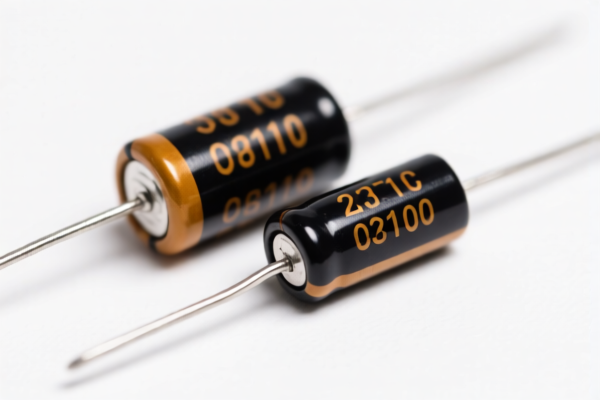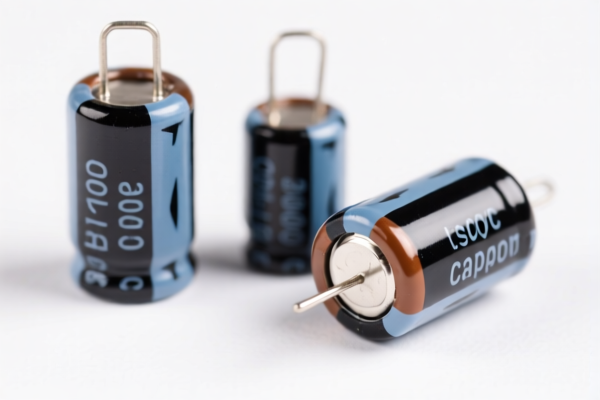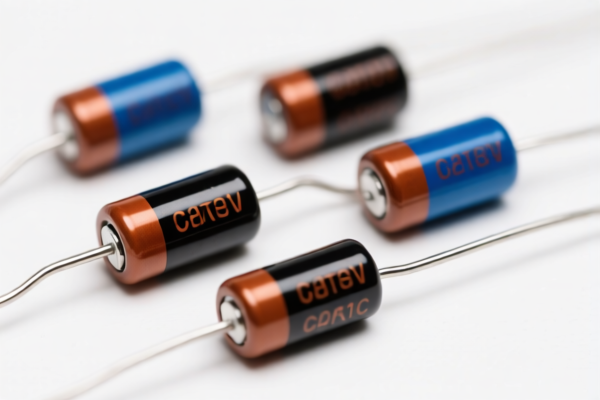| HS Code | Official Doc | Tariff Rate | Origin | Destination | Effective Date |
|---|---|---|---|---|---|
| 3914002000 | Doc | 55.0% | CN | US | 2025-05-12 |
| 3914006000 | Doc | 58.9% | CN | US | 2025-05-12 |




Electrolytic Capacitors
Electrolytic capacitors are a type of capacitor where the dielectric is an electrolytic solution. They are widely used in many electronic devices due to their high capacitance per volume compared to other capacitor types.
Material:
- Dielectric: Typically aluminum oxide (Al₂O₃) formed electrochemically, though tantalum pentoxide (Ta₂O₅) is also used.
- Electrolyte: A liquid or solid conductive solution that provides the second electrode and forms the dielectric layer. Common electrolytes include liquid solutions of ammonium borate or organic solvents, as well as solid manganese dioxide or conductive polymers.
- Electrodes: Aluminum or tantalum foil.
- Case: Aluminum, plastic film, or molded resin.
Purpose:
Electrolytic capacitors are primarily used for:
- Power supply filtering: Smoothing ripple voltage in DC power supplies.
- Decoupling: Providing a local energy reserve for integrated circuits to stabilize voltage and reduce noise.
- Bypassing: Shunting unwanted AC signals to ground.
- Coupling: Blocking DC signals while allowing AC signals to pass.
- Energy storage: Applications requiring relatively large energy storage, such as camera flashes.
Function:
Electrolytic capacitors store electrical energy by accumulating electric charge on two electrodes separated by a dielectric. The capacitance value, measured in farads (F), determines the amount of charge stored for a given voltage. The capacitance is proportional to the area of the electrodes and inversely proportional to the distance between them. The formation of the oxide layer increases the effective dielectric thickness, allowing for high capacitance values in a compact size. Polarization is a key characteristic; the capacitor must be connected with the correct polarity to avoid damage.
Usage Scenarios:
- Power supplies: In switching and linear power supplies for filtering and smoothing.
- Audio equipment: In amplifiers and audio circuits for coupling, decoupling, and filtering.
- Motherboards and computer systems: For decoupling and power supply stabilization.
- Mobile devices: In power management circuits.
- Automotive electronics: In various control and power systems.
- LED lighting: In power conversion and filtering.
Common Types:
- Aluminum Electrolytic Capacitors: The most common type, offering high capacitance and relatively low cost. Subdivided into:
- Radial Lead: Have leads extending from one end.
- Axial Lead: Have leads extending from both ends.
- SMD (Surface Mount Device): Designed for surface mounting on printed circuit boards.
- Tantalum Electrolytic Capacitors: Offer better performance characteristics than aluminum capacitors, including higher stability, lower equivalent series resistance (ESR), and wider temperature range. More expensive than aluminum capacitors. Subdivided into:
- Wet Tantalum: Contain liquid electrolyte, offering higher capacitance values.
- Dry Tantalum (Solid Electrolyte): Contain solid manganese dioxide electrolyte, offering better stability and reliability.
- Polymer Electrolytic Capacitors: Utilize conductive polymer electrolytes, providing excellent ESR, high ripple current capability, and long lifespan. Generally more expensive than aluminum or tantalum capacitors.
- Conductive Polymer Aluminum Solid Capacitors: Aluminum capacitors using polymer electrolyte.
- Conductive Polymer Tantalum Capacitors: Tantalum capacitors using polymer electrolyte.
- Hybrid Capacitors: Combine features of different capacitor types to achieve specific performance characteristics.
Electrolytic capacitors are not explicitly listed within the provided reference material. Therefore, a direct HS code classification cannot be determined based on the information available.
According to the provided reference material, the HS code options related to 'electrolytic capacitors' are limited, with only the following 2 found:
- 3914002000: Ion-exchangers based on polymers of headings 3901 to 3913, in primary forms: Cross-linked polyvinylbenzyltrimethylammonium chloride (Cholestyramine resin USP). This HS code covers ion-exchange resins, specifically cross-linked polyvinylbenzyltrimethylammonium chloride, also known as Cholestyramine resin USP. These resins are used in various applications, including water treatment and pharmaceutical processes. The total tax rate is 55.0%, comprising a base tariff of 0.0% and an additional tariff of 25.0%, increasing to 30.0% after April 2, 2025.
- 3914006000: Ion-exchangers based on polymers of headings 3901 to 3913, in primary forms: Other. This HS code encompasses other ion-exchange resins based on polymers falling under headings 3901 to 3913. The total tax rate is 58.9%, consisting of a base tariff of 3.9% and an additional tariff of 25.0%, which will rise to 30.0% post-April 2, 2025.
It is important to note that these HS codes relate specifically to ion-exchange resins. If electrolytic capacitors do not fall into this category, further classification guidance would be needed.
Customer Reviews
No reviews yet.